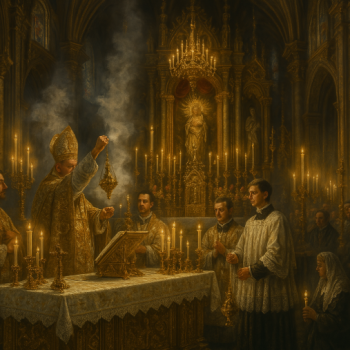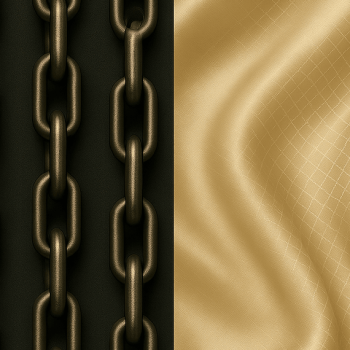Cities change. Churches change. How will we accommodate change, while retaining what is worthy in our cultures and traditions?

I studied city planning in college, and I am fascinated by the history of cities. I just finished reading Four Lost Cities: A Secret History of the Urban Age by Annalee Newitz. This insightful book contrasts the traditional narrative that “civilizations have ‘classical’ or ‘peak’ phases that we can contrast with a ‘collapse’ phase.”
Newitz continues, “The idea of collapse comes out of the same 19th- and 20th-century colonial traditions that brought us the idea of lost cities miraculously ‘discovered’ by European archeologists. Thinkers in this tradition hold that all societies progress along the same path that European civilizations took, growing bigger, more hierarchical, and more industrialized over time.”
The book considers four case studies, including Çatalhöyük, Pompeii, Angkor, and Cahokia. Cahokia was a Native American village located near what is now East St. Louis in southern Illinois. Over 1,000 years ago, the city featured earthen mounds and large pyramids. Cahokia was the largest pre-Columbian city in North America, larger than Paris at the time.
Is History Cyclical or Linear?
Cahokia’s development was more cyclical than linear. Initially, the city was comprised of organically-designed neighborhoods, featuring community courtyards and egalitarian housing. Eventually, the city adopted a uniform grid pattern and erected huge ceremonial structures. Soon, the elites retreated to their hillside mansions, as the commoners stayed in their valley homes.
Ultimately, the elites converted public spaces into private spaces for their own use, even erecting walls around them. At the same time, the commoners appeared to revert to their traditional ways, favoring community courtyards and egalitarian housing again. Soon, the elites abandoned the city, having lost the support of the commoners.
Newitz concludes, “We can see patterns of expansion and abandonment that emerge over centuries…. Their fates depend on political will, as well as the human labor power needed to rebuild…. Each was precipitated by the thorny problem of managing an enormous piece of human-built infrastructure in a constantly-changing environment…. But if we’ve learned anything from history, we know the death of a few cities doesn’t mean the world will collapse into dystopia…. Human communities are remarkably resilient. Cities may die, but our cultures and traditions survive.”
How Did Pittsburgh Recover? Will Dallas/Fort Worth Retreat?
I spent my childhood in Pittsburgh and my adulthood in Dallas/Fort Worth. In my 66 years, I witnessed the rise and fall of cities.
One hundred years ago, the industrial heartland was thriving. Pittsburgh was the home of the steel industry, and the wealthy Carnegies and Mellons supported colleges, libraries and museums. Fifty years ago, the steel industry fell on hard times, and many enterprising young people (like me) left the lake-effect snows of the Rust Belt for the balmy skies of the Sun Belt.
Today, Pittsburgh is on the mend. The far-sighted investments in culture and education attracted new industries. In the Steel City, high-tech incubators replaced shuttered steel mills.
What will Pittsburgh look like in 50 years? What will Dallas/Fort Worth look like in 50 years? Have we made the far-sighted investments in culture and education? Will we have sufficient water? As temperatures rise, will enterprising young people (like my grandsons) leave the featureless, scorching plains of Texas for the lush forests, rolling hills and mild temperatures of Pennsylvania?
How will we accommodate change, while retaining what is worthy in our cultures and traditions?
What Does This Have to Do With Spirituality?
I spent my early life in Catholicism and my later life in non-religious spirituality, meaning “none” or “spiritual, but not religious.” In my 66 years, Catholicism (and other Christian denominations) do NOT have the influence in society that they used to enjoy. Today, many people reject the speculative beliefs, supernatural doctrines, and unkind practices that many Christians embrace.
Remember the elites who lost their way in Cahokia? Historians do not know if they were political elites or religious elites. They were likely political/religious elites, like we have today. Either way, they lost the support of the commoners, who abandoned the huge ceremonial structures and the massive public works projects, in favor of a more intimate, traditional way of life.
Do you see the parallel between abandoned pyramids and abandoned cathedrals? Me too. Do you see a similar unholy alliance of politics and religion, a similar loss of support of the commoners and a similar preference for a more intimate, traditional way of life? Me too.
Some in Cahokia abandoned the city for places unknown. Others remained in the city, but reconfigured their lives. Others left the city, but retained their cultures and traditions.
I wrote about the decline of churches here. Some readers were quick to say something like, “Religion is not dying; religion is changing.” Point taken, but I think that we’re saying the same thing. Cities change, churches change, climate changes, politics changes, and religion changes. Cahokia changes, Pittsburgh changes, and Dallas/Fort Worth changes.
How will we accommodate change, while retaining what is worthy in our cultures and traditions?
If you want to keep up with the latest from You Might Be Right, please subscribe.
The Way is a Silver winner in the 2024 Nautilus Book Awards.
If you enjoyed this article, please leave a comment at the bottom of this page.
Thanks for reading You Might Be Right!!














